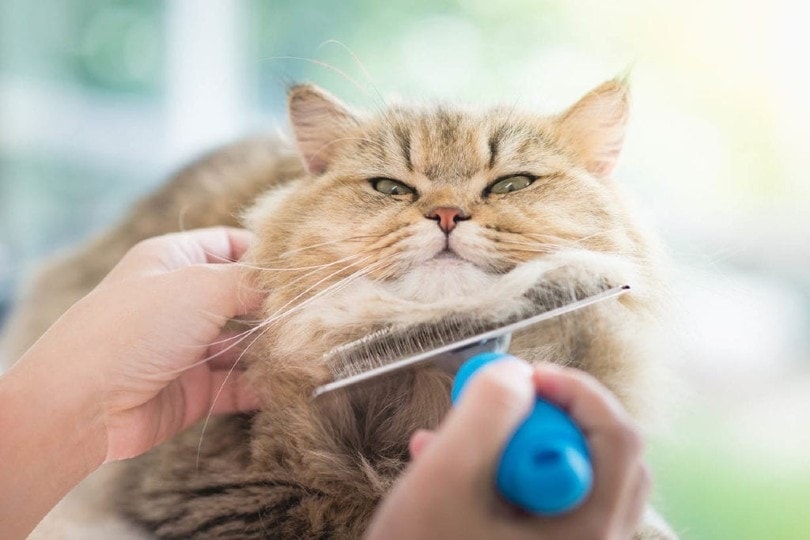Does Pet Insurance Cover Diabetes? Insurance Standards Explained

Updated on

Diabetes is a chronic condition that can lead to other chronic but related conditions, and a personalized treatment plan with your pet’s vet will ensure they remain happy and healthy for as long as possible. Pet insurance can make caring for your cat or dog more affordable, but does it cover diabetes treatment? Yes and no.
If their diabetes is a pre-existing condition, meaning they were diagnosed before the insurance policy, their treatment is not covered. However, you can take steps while your pet is still healthy to ensure you can care for them more affordably should they develop diabetes or another chronic condition in the future. Pet insurance can also help with preventative care that can detect or protect against diabetes.
Understanding Diabetes
Just as in humans, diagnosing diabetes1 early and properly managing it can improve and extend your pet’s quality of life. Diabetes mellitus, or just diabetes for short, is a condition where there is not enough insulin to counteract the amount of sugar in your pet’s diet. There are many reasons why your pet stops producing insulin. If the change is gradual, it can be overlooked.

A Pre-Existing Condition
A pet insurance policy will not cover any condition diagnosed before the date the policy becomes effective. In some cases, if the pre-existing condition is severe and likely to cause other chronic diseases, they may decline to offer a policy, making it difficult to find a pet insurance policy for pets that have already been diagnosed with diabetes.
If you take out an insurance policy and suspect your pet has diabetes or another chronic condition that hasn’t been diagnosed yet, a veterinarian may be obligated to report that the disease had existed for some time before the policy was signed. The policy provider may decide to deny the claim for that visit or cancel the policy altogether.
To maximize your chance of getting your pet’s diabetes insurance claim covered, it is best to choose some of the top-rated pet insurance companies on the market. To help you with your choice, we picked some of them for you:
Top Rated Pet Insurance Companies:
Pet Insurance Policy Limitations
If your pet hasn’t been diagnosed with chronic illnesses and is still healthy and happy, it’s a great time to invest in a pet insurance policy. As long as you continue paying the monthly or annual premiums, they are covered for any new acute or chronic illnesses or injuries.
Like health insurance for humans, there are various policies with coverage limits depending on your needs and cost budget. You can choose a policy with a coverage cap specific to each condition treated that renews at the end of each year. Another option is a cap that covers the policy regardless of the disease or injury. Once you reach the cap, you’ll pay out of pocket until the following year. With a per policy cap, once the cap is reached, it does not reset, and the policy will not pay out any more benefits.

Diabetes Treatment and Costs
Diabetes treatment can be costly without the financial assistance of a pet insurance policy. Depending on the severity of the disease, you’ll need to cover insulin and syringes, a glucose meter with lancets and test strips, and special food designed for a cat or dog with diabetes. This is in addition to the vet bills for visits and blood tests required to help diagnose the condition and determine the amount of insulin they need.
The cost also doesn’t include other chronic conditions your pet has developed due to diabetes. Pancreatitis, chronic infections, nerve dysfunction, and cataracts are just a few diabetes complications that may be possible if the condition is not diagnosed early and managed with the guidance of their vet.
Risk Factors for Diabetes
Some pets are more likely to develop diabetes. Type I diabetes, an autoimmune disease, is possible but rare. Type II diabetes is much more common and develops later in life, usually caused by obesity, pregnancy, chronic pancreatitis, hormonal conditions, and more. It can also be genetic, passed on from the pet’s parents, or their breed may be naturally more susceptible to developing diabetes—for example, Labrador Retrievers and Miniature Schnauzers.

Common Symptoms
Diabetes symptoms can include increased thirst and urination, a change in their eating habits or weight, general tiredness, and, in dogs, cloudy eyes. These are only the most common symptoms. Every pet will exhibit different signs of diabetes. You know your cat or dog the best, and if you notice anything abnormal, be sure to schedule a visit with their vet.
Tips to Keep Your Pet Healthy
Because we know many of the risk factors for diabetes, we also know what pet parents can do to help keep their pets healthy. To prevent diabetes, always follow your vet’s recommendations and ensure your pet has annual preventative healthcare. In addition, follow the tips below.
- Maintain a healthy weight: Pets that are overweight are more likely to develop diabetes. Be sure to follow feeding recommendations from your vet, breeder, or other professional. Work with your vet to establish a diet and exercise plan if your pet is overweight.
- Get plenty of exercise: Even pets that maintain a healthy weight should get daily exercise. Go for walks or runs, play fetch in the yard, use a chase toy, or find other creative ways to get your pet the exercise they need to stay healthy.
- Get female pets spayed: Female pets are more likely to develop diabetes, but you can help improve their chances by having them spayed. This also helps prevent some types of cancers.
- Choose their food carefully. Some pet foods are full of carbs and contain very little protein. Cats and dogs need meat and protein to remain healthy, and too many carbs can lead to insulin resistance.
In Summary
Diabetes in pets is treatable but is expensive without pet insurance. Getting insurance for a pet that has already developed diabetes is impossible, but you can take the precaution of insuring your pet while they are healthy. A solid pet insurance policy can put you at ease, knowing that you can affordably care for your pet if they develop diabetes or another chronic illness as they age.
- You might also like: Pet Diabetes Month: When Is It and How Is It Celebrated?
Featured Image Credit: Rawpixel.com, Shutterstock











